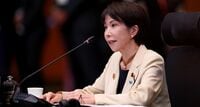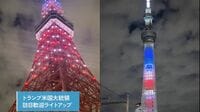TOKYO (Reuters) - The United States military grounded its tilt-rotor MV-22 Osprey aircraft in Japan on Wednesday after Tokyo called for a halt to flights following a crash southwest of Okinawa island, the first accident involving the aircraft in Japan.
A U.S.-operated Osprey crashed into the sea on Tuesday, injuring its crew of five. Pictures of the scene aired by Japan's public broadcaster NHK showed the aircraft broke into at least three pieces in waters close to the coast.
"No flights in Japan are planned today," a U.S. Marine Corps spokesman in Okinawa said. The U.S. military was still investigating the cause of the crash, which Prime Minister Shinzo Abe described as "regrettable" on Wednesday.
The Osprey, built by Boeing Co and Textron Inc's Bell Helicopter and designed to take off like a helicopter and rotate its propellers to fly like a plane, has suffered a series of incidents in other parts of the world prior to the crash in Okinawa.
The aircraft has become a lightning rod for opposition to the U.S. military presence in Okinawa, with local groups that want American bases to close claiming the aircraft is prone to crash and poses a danger to resident.
The United States says it has two Osprey squadrons in Japan, although it doesn't disclose the exact number of aircraft. A squadron typically comprises between 12 to 24 aircraft
The first Osprey crash in Japan could further delay plans to relocate some U.S. forces on the island and comes amid a surge in resentment against U.S. bases after an American civilian working for the military was arrested this year over the murder of a 20-year-old Japanese woman.
Okinawa, which was under U.S. occupation until 1972, hosts the bulk of the approximately 50,000 U.S. military personnel in Japan.
(Reporting by Tim Kelly, Kaori Kaneko and Nobuhiro Kubo; Editing by Michael Perry)



